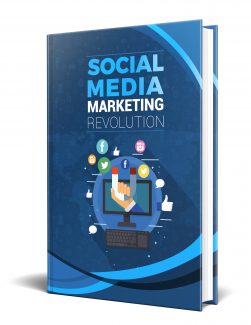
 License Type: Private Label Rights
License Type: Private Label Rights  File Type: ZIP
File Type: ZIP
 SKU: 63641
SKU: 63641  Shipping: Online Download
Shipping: Online Download
Sample Content Preview
Introduction
A lot of marketers have all sorts of wrong ideas about social media marketing. Some think that you only need to post "viral content" to get tons of traffic overnight. They actually believe that if you are able to pump that much traffic to your target
website, a large chunk of those people will buy whatever it is that you are selling.
Maybe you're selling services, maybe you're selling an event, or maybe you are selling products from an online store, it doesn't matter. According to this idea, you just need to have a lot of traffic; courtesy of viral content on social media, and you will get the conversions you're looking for.
There is an assumption that social traffic, regardless of which platform it comes from and regardless of how you qualify that traffic, converts to sales readily. Sadly, none of these assumptions are true. In fact, all of them are tragically mistaken.
If you believe in any of these, don't be surprised if you spend a lot of time, effort and money only to end up with a whole lot of nothing. Welcome to the club.
Effective social media marketing can be reduced to one metaphor. Master this metaphor and you probably will make money on autopilot with social media traffic. Screw up this metaphor or remain clueless to it, and you'll continue to struggle; you'll continue to believe that social media traffic can easily be generated through viral content. You might keep running after that unicorn only to get tired and frustrated.
It doesn't have to be this way. You just have to have the right metaphor or the right conceptual model to make social media marketing work for you. Best of all, you can make it work on autopilot.
You probably have heard of all sorts of "set it and forget it" systems. You probably bought at least one of these products. Well, they're definitely on the right track as far as their label. Social media marketing can be automated. It can be mastered to the point where it can produce income after you've set it. But getting there is another matter entirely. And that's the price people have to pay.
And unfortunately, most people are not willing to pay that. They're excited about shortcuts, but they're not willing to take the stairs to get to the top. At the back of their minds, they're thinking that there has to be some sort of elevator.
There is no shortcut. You have to work with this metaphor
What am I getting at? Well, the secret to effective social media marketing is an inverted pyramid. It looks like a funnel. That is the metaphor you should have in your mind when thinking of ways to get traffic from social networks and
social media platforms and turning that into cold, hard cash in your bank account.
I need you to keep this idea of an inverted pyramid in your mind. It should have a wide base at the top. The top of that pyramid is heavy visibility. It has to be there. You need to be visible on the four major social media platforms. I'm talking about Facebook, Twitter, YouTube, and Pinterest.
Taken together, the traffic volume you can get from these four platforms is mind blowing. They can potentially pump a tremendous amount of traffic. But that's just part of the equation. That's just the top of the funnel. Potentially, you can push a lot of traffic from the top. That's how wide the top of the funnel is.
This training will focus on these four platforms, but you can pretty much use the tips that I'm going to share with you and modify them to market on other platforms since many of these principles easily apply.
You might need to modify them a little bit. For example, if you are thinking of marketing on Instagram, a lot of the things that I will teach you about Facebook, Twitter, YouTube, and Pinterest, can be tweaked to work well on the Instagram platform.
Now that you have a clear idea of the heavy visibility that you can achieve with social media, keep in mind that visibility does not mean traffic or clicks to your site. This is a myth. The visibility that I'm talking about means visibility on those platforms.
When people share your content within those platforms, you can enjoy a tremendous reach within such platforms.
But this does not automatically mean that when you share content on Facebook, people who see your link on the materials shared by their friends would automatically click them.
Get the idea out of your head that raw visibility, or as Facebook terms it, "reach," automatically translates to traffic. It doesn't work that way. Instead, you need to start with heavy content visibility on each platform. People must see your stuff there. You must achieve a wide enough reach.
People may not necessarily click on through to your site, but that's secondary. At this point, you just want your brand to be visible. You just want people to become familiar with your brand.
So what's the big deal about visibility anyway? You may be thinking, since visibility doesn't mean actual visitors to your website, what good is it?
Think about it this way, when was the last time you saw an ad for the first time and automatically clicked it? If you're like most other people, you probably would want to see the ad show up a few times for you to become familiar with it. You might glance at if from time to time, you might read the description from time to time, but after enough showings, you might seriously think of clicking through.
The same applies to your content on social media platforms. Don't expect that just because you come up with catchy titles and nice, attention-grabbing graphics that this is enough for you to expect a tremendous amount of clicks to your website. It doesn't work that way.
People have to be comfortable enough. Your content has to become familiar enough for them to click on it.
When audience members click on the content you share through your social media accounts, they get a chance to like your page, follow your Twitter feed, pin your posts, or subscribe to your YouTube channel. They still stay on the platform, but they get a chance to subscribe to your account or follow you.
This is the second stage of the social media funnel or inverted pyramid. You have to develop some sort of in-platform credibility. Your content is not just this random material that came out of nowhere. Even if people don't click on it, they see enough similarity in terms of branding, graphics, as well as other content cues so that your brand stands apart from everybody else's.
Again, they may not necessarily be motivated to click, but with enough repetition through social media channels targeting certain topic categories and hashtags, your brand doesn't remain an unknown quantity.
Once you have people checking your content out through your social media accounts, you can then send them "call to action" content (CTA). This content recruits people to your mailing list. This social content that you're sharing offers some sort of incentive.
Maybe you're giving away a free booklet, maybe you're giving away software— whatever the case may be, there is some sort of giveaway to incentivize people to click on that link, enter their email address, and join your mailing list.
Whether you use freebies, special content, special free tickets to an online webinar that's pre-recorded, it doesn't really matter. Whatever the case may be, the endgame is to get people to join your list.
- License: Private Label Rights
- Category:Ebooks
- Tags:2020 Ebooks Private Label Rights







